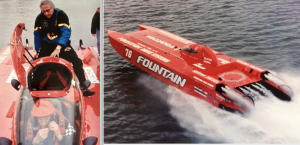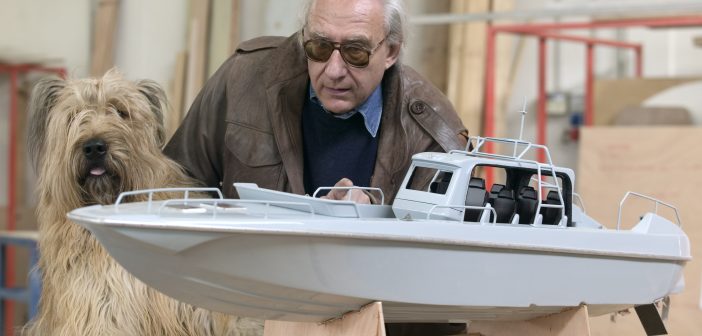We usually write about powerboat cruising, not powerboat racing, but we want to note the tragic death of Fabio Buzzi, a legend in the performance boating world, because of a very personal connection. I drove a Fountain 47 catamaran with Buzzi almost 20 years ago in North Carolina to a speed of 162 mph, the fastest in the world at the time.
Buzzi, 76 and a ten-time world powerboat champion, died this week when he was trying to beat his own record racing from Monaco to Venice. At the very end of the race, at night, he hit an artificial reef at the entrance to the Venice lagoon at 80 knots. The boat flew through the air and landed on its stern on the other side of the reef. Buzzi and two crewmen were killed on impact; a fourth was thrown clear and seriously injured.
An Italian, born on the shore of Lake Como, Buzzi raced his first boat when he was 17. It sank. He later said that if designer’s boats didn’t sink, they weren’t pushing the envelope enough. Buzzi was the founder of FB Design, specializing in building high performance boats. His designs have won more than 50 world championships and set 40 world speed records.
In person, Buzzi was smart, kind and generous. In late January of 1999, he and Reggie Fountain drove a red Fountain cat to a world-record 162 mph near the Fountain factory outside Greenville, North Carolina. The boat had Buzzi’s surface-piercing drives, which were enormous, and twin 1,250-hp Seatek turbocharged diesels. The cat also had a big flap on the bow which could be adjusted to keep the boat from catching some air and pitchpoling.
I had arranged with Reggie to drive the boat with Buzzi after the two of them had their record run. Two people sit inside the covered cockpit, one behind the other, and they communicate with headsets. I sat in the driver’s spot in front, Buzzi in back. We put on a race helmet and a five-point harness.
What got my attention was that then the Fountain people taped a small bottle of oxygen to our upper right arms, and led a breathing tube up close to our mouths. The idea was that if the boat turned over, we could use that oxygen to stay alive until a diver found us. The racecourse was lined with stake boats, and a diver was in the helicopter with the late Roy Attaway, my friend and photographer, who took the pictures below.
Then, as we were ready to leave the dock, Reggie tapped my on the helmet and said, “Good luck. Don’t do anything stupid.” Buzzi commented that one of his crewmen had lost his arm in a crash the previous month. (I thought, Thanks for sharing, Fabio.)
On the water, things go by very fast at 162 mph. The big cat was right on the edge of losing control. Buzzi adjusted the drives and the flap and I felt that we were skating on ice with very little room for error. I have to admit I was scared when I got in the boat, but once we were going more than 80 or 90 mph total concentration took over. At more than 120 or so, not much of the boat, other than the drives, was in the water.
When we got back to the dock. Buzzi was happy. We shook hands and he said, “Now you’re the fastest journalist on the water. But what will I tell Dag Pike?”
Pike, one of the most accomplished mariners in the world, has set transatlantic speed records under sail and power. He also is a friend of mine. And he was a friend and colleague of Buzzi’s as well.
This week, after Buzzi died, Pike sent me a note saying that “Buzzi did more for fast powerboat development than anybody else over the past 50 years. I raced with Fabio as his navigator for over 25 years and also was his navigator on many of his record attempts. We even shared the same birthday. He was the ultimate professional, analyzing every detail of the boat and the course as well as the opposition. No stone was unturned in his quest for perfection…
“Fabio’s death will leave a gaping hole in the high performance sector. I doubt we will ever see his like again.”





